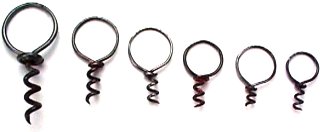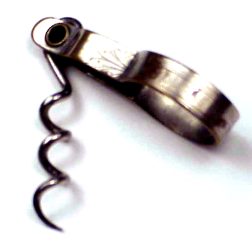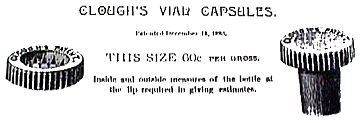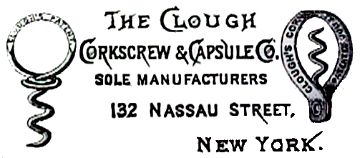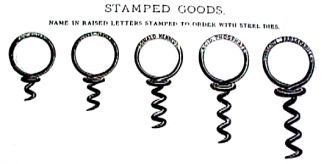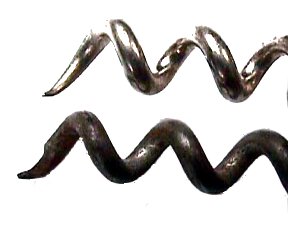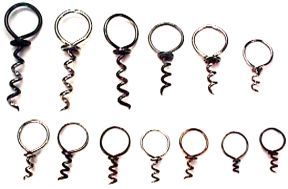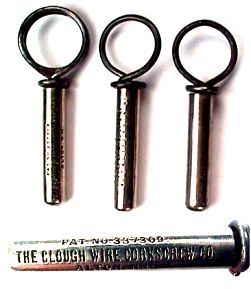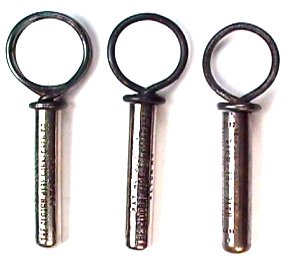|
1884 July 22 U.S. Patent No. 302,321,
Applied for December 26, 1883 - "Corkscrew" (Flat Advertising Metal Band Wire
Corkscrew). A folding flat metal band corkscrew, which could also be used for
product advertising on the outside and inside of the band. This corkscrew could
be folded for convenient carrying in the pocket. Examples of this patent are
often found today, with coloured paint advertising to catch the customers eye,
and often with the patent date marked.
The partnership of Clough &
Maconnell is the manufacturers name often found marked on period U.S. examples.
Later Maconnell acquired sole rights to manufacture and market this 1884
Patent. Many of the latter are marked "James M. Maconnell New York". An ad in
the Pharmaceutical Era of June 23, 1898, lists J. M. Maconnell, 132 Nassau St.,
New York as "the sole manufacturer of Clough's patent folding
corkscrews". |

It is interesting to note that William
Williamson was granted U.S. Patent No. 405,385 on June 18, 1889, for a very
similar metal band advertising corkscrew. To my knowledge a marked example has
never been found, although Jack Bandy has a piece marked "WILLIAMSON CO.
CLOUGH'S PATENT", which appears identical to an 1884 Clough
patent. |

